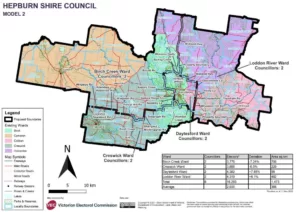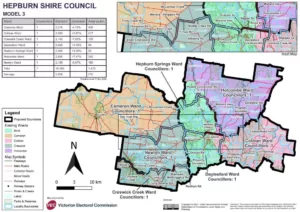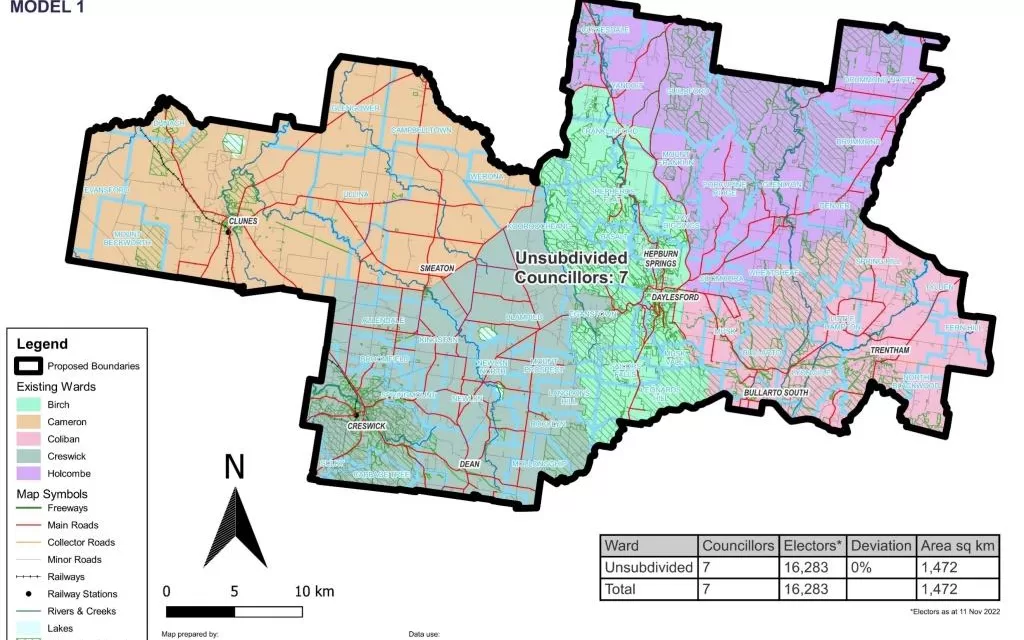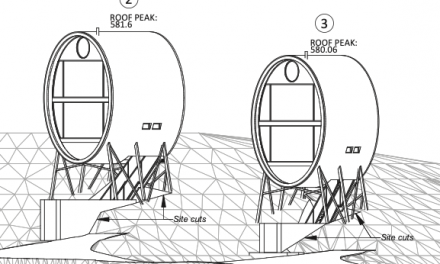The Victorian Electoral Commission has released its Preliminary Report on an electoral structure for Hepburn Shire.
Changes to the electoral structure are required to comply with the Local Government Act (2020) which requires that there be an equal number of councillors for each ward in the municipal district or that councillors are elected “at large” to represent the whole of the municipal district.
Currently, the Council has seven elected Councillors from five wards with two Councillors representing Birch (Daylesford, Hepburn, Hepburn Springs) and Creswick and one Councillor for each of Cameron (Clunes), Coliban (Trentham) and Holcombe (Glenlyon) wards.
The Preliminary Report is based in part on submissions received from Shire residents by the Electoral Representation Advisory Panel (ERAP).
The Panel has presented three structural models for consideration:
Model 1 is an an unsubdivided electoral structure with 7 councillors. Councillors would be elected at large from the whole of the Shire and would not represent a particular area (or ward). One advantage of an unsubdivided structure is that it might reduce parochialism and encourage a more shire-wide approach to issues affecting residents. It would also elimnate the need to redraw boundaries if population changes created imbalance between wards.
A disadvantage of an unsubdivided structure is that it could make councillors more difficult to contact because they are not responsible to any particular area in the Shire. However, a candidate with good local support would have a reasonable chance of achieving the required quota to be elected.
Model 2 is a subdivided electoral structure with four wards and 2 councillors representing each ward for a total of 8 councillors. Seven councillors is typical of other similar sized shires but Hepburn is at the upper end of these shires in terms of population and 8 councillors might be justified.

Model 2 electoral structure. Existing 5 wards are shown in colour. Lines show the boundaries of the four proposed wards.
Multiple councillors in a ward allows councillors to work as a team and share the load of serving ward residents. An 8 member Council however, might be divided evenly along ward lines meaning that the Mayor, with a deciding vote, could have much more power in a divided Council.
Model 3 is a subdivided electoral structure with 7 wards and one councillor representing each ward. In a geographically disparate shire like Hepburn, a locally elected councillor would better understand the needs of residents. The Act, however, does not require an elected councillor to live in the ward they represent.

Model 3 electoral structure. Existing 5 wards are shown in colour. Lines show the boundaries of the seven proposed wards.
Any person or group, can submit a response to the electoral representation advisory panel. Submissions should address the models proposed by the panel in the preliminary report. Submissions close at 5 pm on Wednesday 19 April 2023
Mayor, Cr Brian Hood, said “This is the community’s chance to let the advisory panel know their thoughts about how they prefer to see the electoral structure represented,” he said. “Council will also carefully consider the options,” said Cr Hood.
To view the full report, visit vec.vic.gov.au/hepburn.
Submissions close at 5 pm on Wednesday 19 April 2023.
Related stories:





